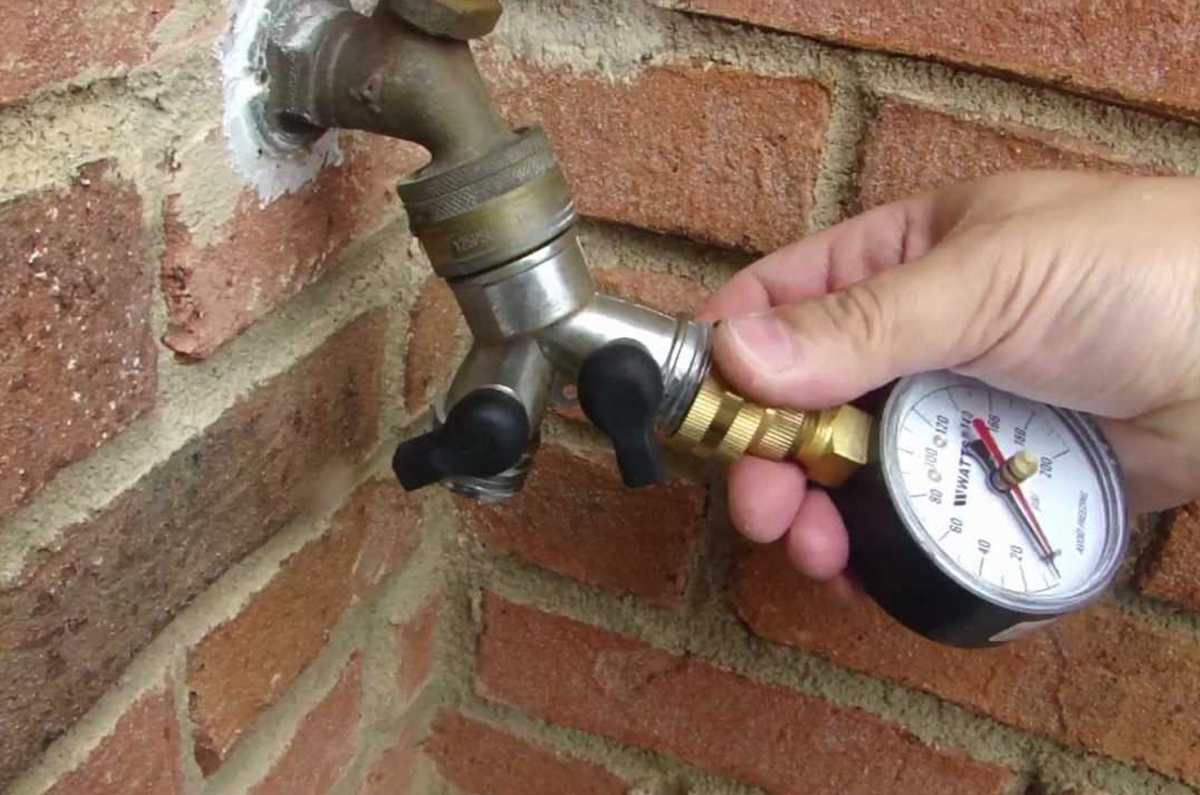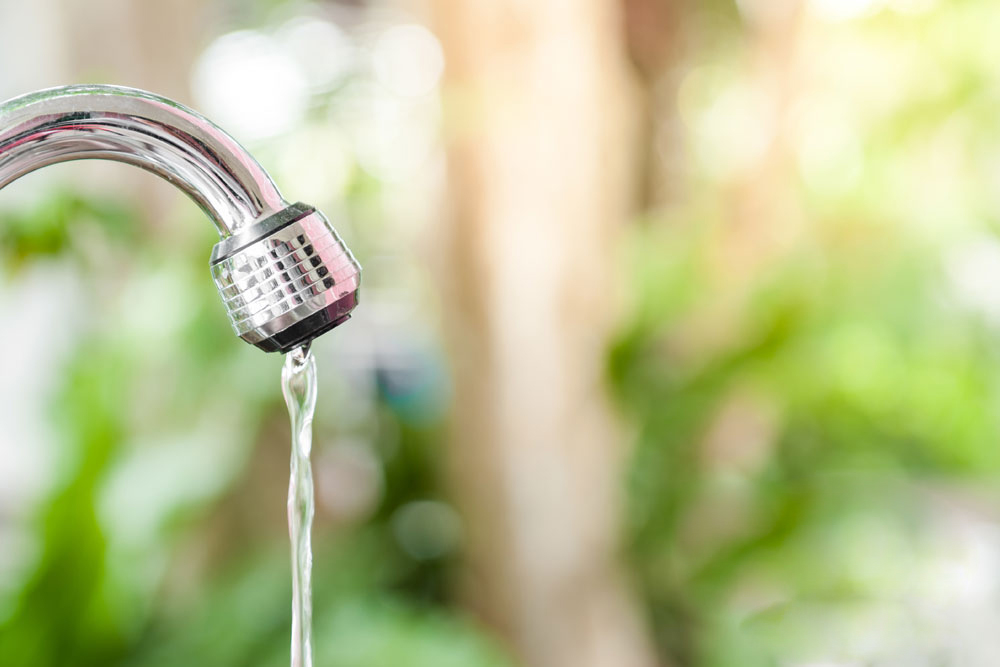Verified Methods for Addressing Low Water Pressure in Your Home
Verified Methods for Addressing Low Water Pressure in Your Home
Blog Article
What're your concepts on 4 Ways to Troubleshoot Low Water Pressure?

Low tide stress in your home can be an aggravating problem, affecting everything from bathing to cleaning dishes. If you're experiencing weak water flow, there are several possible causes and options to discover. In this guide, we'll talk about typical factors for low tide stress and useful actions to address the issue efficiently.
Introduction to Low Tide Stress
Low tide pressure takes place when the circulation of water from your faucets, showers, and various other components is weaker than normal. This can make day-to-day tasks a lot more difficult and less efficient. Understanding the causes of low water pressure is critical to discovering the ideal service.
Typical Reasons For Low Tide Pressure
Faulty Pressure Regulatory Authorities
Pressure regulators are accountable for preserving regular water pressure in your house. If they malfunction, it can cause low water stress or uneven flow throughout your home.
Metropolitan Water Issues
Occasionally, the problem exists outside your home. Local water problems, such as main line leakages or upkeep work, can briefly reduce water stress in your location.
Pipe Obstructions
In time, pipelines can become obstructed with mineral deposits, debris, or debris, restricting the circulation of water. This is an usual concern in older homes with galvanized steel pipes.
Rust
Corrosion within pipes can bring about leakages and reduced water stress. Corrosion accumulation can tighten water circulation, specifically in maturing plumbing systems.
Exactly How to Identify Low Water Stress
Inspecting Pipes
Check visible pipelines for indications of leaks, deterioration, or clogs. Focus on any type of uncommon sounds, such as knocking or rattling pipelines, which could suggest concerns within the plumbing system.
Consulting with a Plumber
If you're unable to pinpoint the source of low tide stress, take into consideration hiring an expert plumber to conduct an extensive inspection. They can identify underlying concerns and recommend appropriate options.
Examining Taps and Components
Beginning by testing the water pressure at different taps and fixtures throughout your home. If the issue is separated to particular locations, it may indicate localized issues.
DIY Solutions to Deal With Low Water Stress
Flushing Water Heater
Debris build-up in the hot water heater can limit circulation and lower effectiveness. Purging the storage tank periodically helps eliminate debris and maintain optimum efficiency.
Examining Pressure Regulator
Guarantee that the stress regulatory authority is working appropriately. Readjusting or replacing the regulator can help restore appropriate water pressure throughout your home.
Cleaning Up Aerators and Showerheads
Natural resources can accumulate in aerators and showerheads, decreasing water circulation. Eliminate and clean these components on a regular basis to boost water stress.
Cleaning Clogs in Piping
For small clogs, attempt using a plumbing snake or chemical drainpipe cleaner to clear obstructions in pipes. Be cautious when making use of chemicals and follow safety and security standards.
When to Call a Professional Plumber
If DIY efforts stop working to solve the concern or if you suspect considerable plumbing issues, it's finest to seek support from a qualified plumber. They have the expertise and tools to attend to complicated issues securely and efficiently.
Safety Nets to Maintain Water Pressure
Mounting a Stress Booster
Consider installing a stress booster pump to enhance water stress in locations with consistently reduced circulation. This can be specifically beneficial for multi-story homes or residential properties with high-demand fixtures.
Tracking Water Use
Be mindful of water usage habits and stay clear of overtaxing the plumbing system. Simple modifications, such as staggering showers and laundry lots, can help keep sufficient water stress.
Normal Maintenance
Schedule routine upkeep for your plumbing system to avoid concerns such as rust, leaks, and obstructions. Addressing minor troubles early can aid prevent more considerable repair services later on.
Conclusion
Handling low water stress can be frustrating, however identifying the underlying reasons and carrying out appropriate services can bring back optimal circulation throughout your home. Whether it's cleaning aerators, evaluating pipelines, or talking to a plumber, taking aggressive steps can make certain a stable supply of water for your daily requirements.
9 Solutions to Low Water Pressure
If you have ever struggled to rinse the shampoo out of your hair, washed your hands under a trickle of water, or been forced to wait for your washing machine to complete a cycle, then you have experienced the nuisance of low water pressure. Low water pressure can turn a simple task into a hassle, but once you identify the cause, either the necessary plumbing fix or a water booster pump can drastically improve your water pressure. In this article, you can learn about nine common causes of low water pressure and how to resolve low water pressure in your home.
How do you know if you have low water pressure?
Testing your home’s water with a pressure gauge is the easiest way to find out if you have low water pressure. Pressure gauges are simple and inexpensive, and once installed, will allow you to check your water pressure with a quick glance.
If your water is from a municipal water supply, select an outdoor faucet near where the main water line enters your home. If your water is from a well, select a faucet that is close to the well’s pressure tank. Attach the pressure gauge to the faucet and tighten it. To get an accurate reading, make sure water isn’t being used anywhere else inside or outside the house, and then fully turn the faucet on. Once the faucet is on, you can read the water pressure on the gauge’s dial. Typical home water pressure should be between 40 and 50 psi, so if the dial reads less than 40 psi, you have low water pressure.
Do water booster pumps increase water pressure?
A water booster pump is a centrifugal pump that improves low water pressure and increases water flow. Much like how a fan’s blades create a gust of air, a water booster pump’s rotating impeller draws water in and then pushes it out with increased force. This force raises the water pressure in a system. A water booster pump is installed where the main water line enters your home, so water pressure is improved in every tap and appliance.
What causes low water pressure?
1. Hard water
If you have hard water, scale can accumulate in your pipes, restrict the water flow, and reduce your water pressure. Hard water has a high mineral content, specifically calcium and magnesium, and scale is formed when these mineral salts dissolve.
The solution: When scale buildup is severe enough to restrict water flow and reduce water pressure, the best solution is to replace your pipes. Products like CLR Calcium, Lime, and Rust remover can diminish scale, but as the scale comes off it may clog your pipes, creating another costly plumbing problem. Not to mention, it is never a good idea to put harsh chemicals in the pipes that supply your drinking water. To prevent scale in the future, we recommend installing a water softener.
The main water shut off valve is not open.
If your water pressure has suddenly decreased and you recently had a repair done, make sure the main water shut off valve is fully open. Most plumbing repairs require the water to be shut off, but if the valve is not completely opened afterward, your water pressure will be restricted.
The solution: Locate your main shut off valve, which is installed where the main water line enters your home, and fully open it by turning it counterclockwise.
A municipal water problem
Low water pressure may not have to do with your own plumbing system. Just like your home’s water supply, the municipal water supply is subject to problems that can cause low water pressure, such as leaks and corrosion.
The solution: Call the municipal water supply to report your low water pressure. Your input may alert them to the problem and will ensure your water pressure is restored as quickly as possible.
Faulty pressure regulator
A pressure regulator is a valve that reduces incoming water pressure as water flows into your home from the main service line. High water pressure can damage pipes and plumbing fixtures, so a pressure regulator is installed to protect your home plumbing system. Most are set to 50 pounds per square inch (psi), but if yours is set lower, your water pressure will feel low. If your pressure regulator is set to 50 psi but your pressure still feels low, it may be broken or clogged.
The solution: Adjust your pressure regulator’s setting to 50 psi if it is currently set lower. If your pressure regulator is faulty, ask a plumber to replace it.
A leak
A leak can reduce water flow and water pressure. To determine if you have a leak, turn all the faucets off inside and outside of your home. About an hour later, check your water meter. If it indicates you are using water, you have a leak.
The solution: Enlist the help of a licensed plumber to locate and repair the leak. Once the repairs are complete, your water pressure should return to normal.
https://www.freshwatersystems.com/blogs/blog/what-causes-low-water-pressure-and-how-to-improve-it

As an avid person who reads on 10 Reasons for Low Water Pressure in Your House, I figured sharing that post was sensible. Are you aware of somebody else who is excited about the niche? Please feel free to share it. I cherish reading our article about 10 Reasons for Low Water Pressure in Your House.
Schedule Your Job Now Report this page